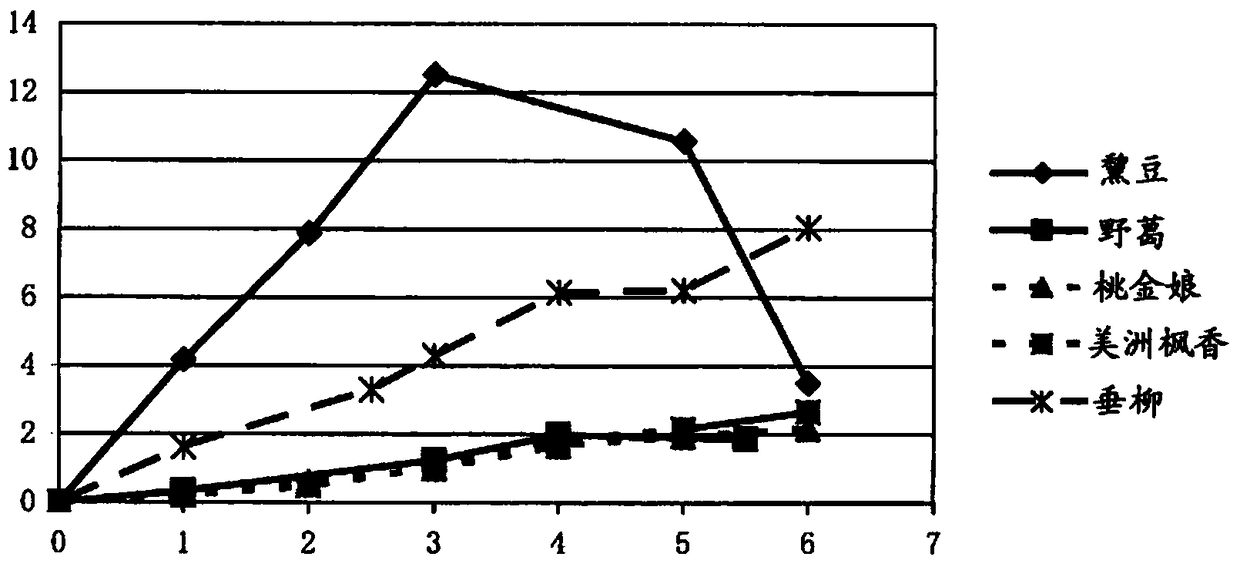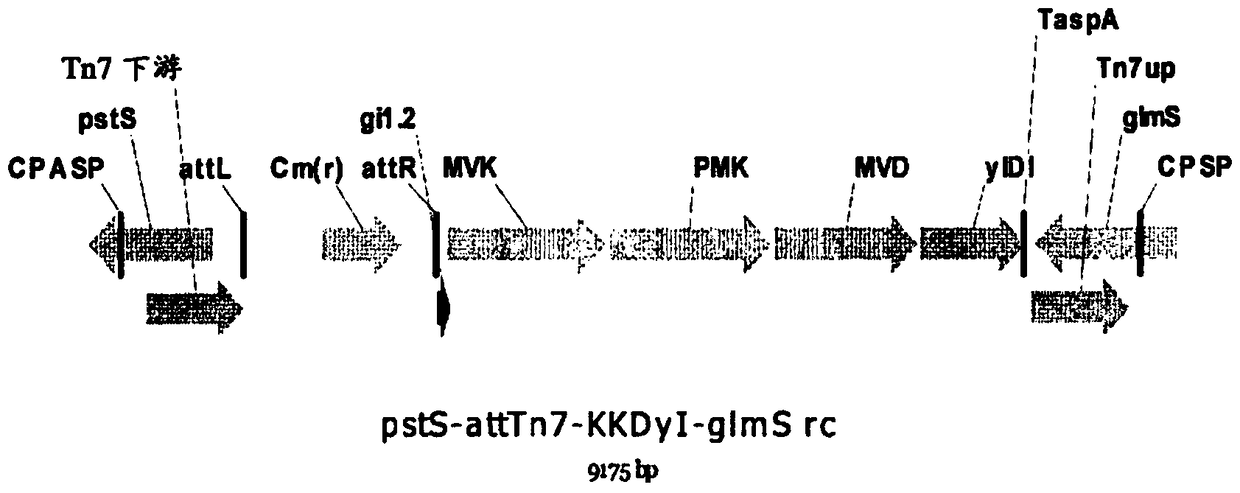Isoprene synthase and gene encoding same and method for producing isoprene monomer
A technology of isoprene and residues, applied in the field of isoprene synthase and its encoding genes, can solve the problem of isoprene reduction and other problems
- Summary
- Abstract
- Description
- Claims
- Application Information
AI Technical Summary
Problems solved by technology
Method used
Image
Examples
Embodiment 1
[0151] Example 1: Evaluation of the ability to produce isoprene in plants
[0152] 1-1) Measurement of the amount of isoprene formed per unit weight of dry leaves
[0153] First, the amount of isoprene formed per 1 g of dry leaves in plants was measured to evaluate the ability to produce isoprene in plants. Mucuna (Mucuna bracteata), weeping willow (Salix babylonica), sweetgum (Liquidambar styraciflua), myrtle (Myrtus communis) and kudzu (Puerarialobata) were used as plants.
[0154] In the measurement of the amount of isoprene formed, a gas replaceable desiccator (trade name: Vacuum Desiccator, manufactured by AS ONE Corporation) was placed in an incubator (trade name: Growth Chamber MLR-351H, manufactured by SANYO), And set the incubator to high temperature induction conditions (100 μmol E / m at 40 °C 2 / s lighting), and at the same time drive the fan for stirring the air arranged in the gas replaceable dryer to stir the air in the space in the gas replaceable dryer. After...
Embodiment 2
[0168] Example 2: Cloning of the isoprene synthase gene from Mucuna
[0169] 2-1) Evaluation of sampling time
[0170] The isoprene gas released from the leaves of Mucuna irradiated with light for 1 hour, 2 hours, 3 hours and 5 hours at a temperature of 40°C was sampled and the amount of isoprene produced was quantified by gas chromatography as described below. , and it was determined that 4, 8, 12 and 10 μg isoprene / g dry weight leaves were produced. Therefore, it was determined that the optimum light exposure was 3 hours.
[0171] 2-2) Extraction of total RNA lysate
[0172] Total RNA was extracted from Mucuna leaves using total RNA lysate according to the following procedure.
[0173] (1) The leaves of Mucuna pruriens subjected to light at a temperature of 40° C. for 3 hours were sampled.
[0174] (2) Under quick-freezing of the leaf tissue with liquid nitrogen, 100 mg of the leaf tissue was ground in a mortar, then the leaf tissue was dispensed into RNA-free 2 mL Eppendo...
Embodiment 3
[0188] Example 3: Preparation of expression plasmids derived from isoprene synthase from different plants
[0189] 3-1) Chemical analysis of isoprene synthase derived from Pueraria montana var. lobata (Kudzu)
[0190] The nucleotide and amino acid sequences of isoprene synthase derived from Australian kudzu are known (Accession Number: AAQ84170: P. montana var. lobata isoprene synthase (IspS)). SEQ ID NO:3 and SEQ ID NO:4 represent the amino acid sequence of the IspS protein derived from Pueraria mirifica (P.montana) and the nucleotide sequence of its gene, respectively. The IspS gene was optimized with respect to codon usage frequency in E. coli to efficiently express the IspS gene in E. coli and further designed to cut off the chloroplast localization signal. The designed gene was named IspSK. SEQ ID NO:5 represents the nucleotide sequence of IspSK. The IspSK gene was chemically synthesized, and then cloned into pUC57 (manufactured by GenScript), and the resulting plasmid...
PUM
 Login to View More
Login to View More Abstract
Description
Claims
Application Information
 Login to View More
Login to View More - R&D Engineer
- R&D Manager
- IP Professional
- Industry Leading Data Capabilities
- Powerful AI technology
- Patent DNA Extraction
Browse by: Latest US Patents, China's latest patents, Technical Efficacy Thesaurus, Application Domain, Technology Topic, Popular Technical Reports.
© 2024 PatSnap. All rights reserved.Legal|Privacy policy|Modern Slavery Act Transparency Statement|Sitemap|About US| Contact US: help@patsnap.com










